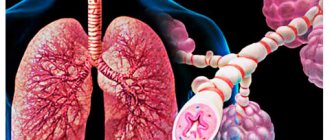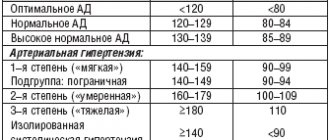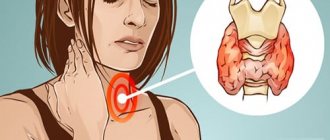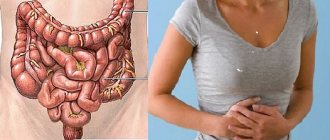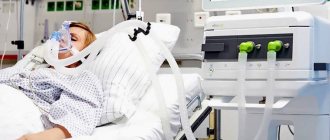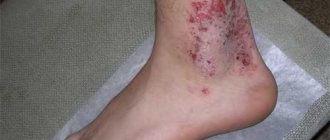Causes of the disease
There are two types of hypertension:
- primary (essential, hypertension) - its causes are not fully understood. It is believed that the development of the disease is associated with a defect in the cell membranes of the vascular walls;
- secondary - caused by a disease of a certain organ, system, the violation of which affects the pressure indicator, or by taking medications.
Although the causes of primary hypertension are unknown, an analysis of incidence has shown that most hypertensive patients share similar features of lifestyle, nutrition, and life history. These patterns were called risk factors:
- heredity: 50% of patients with hypertension have various mutations that contribute to the development of the disease (2);
- obesity;
- smoking;
- sedentary lifestyle;
- excess salt intake;
- insufficient intake of calcium, magnesium;
- chronic stress;
- alcohol abuse;
- older age.
The mechanism of development of stage 1 headache.
The causes of secondary hypertension are varied:
- kidney disease;
- adrenal glands;
- thyroid gland;
- brain.
Hypertension as a side effect develops due to the use of oral contraceptives, glucocorticoids, nonsteroidal anti-inflammatory drugs, amphetamines, and monoamine oxidase inhibitors.
Manifestations and complications of headache
Manifestations of hypertension are determined by the stage of the disease. In the preclinical period, the patient feels well, and only the tonometer readings indicate a developing disease.
As changes in blood vessels and the heart progress, symptoms appear in the form of headache, weakness, decreased performance, periodic dizziness, visual symptoms in the form of weakened visual acuity, flashing “spots” before the eyes. All these signs are not expressed during a stable course of the pathology, but at the time of development of a hypertensive crisis, the clinic becomes brighter:
- Strong headache;
- Noise, ringing in the head or ears;
- Darkening in the eyes;
- Pain in the heart area;
- Dyspnea;
- Facial hyperemia;
- Excitement and feeling of fear.
Hypertensive crises are provoked by traumatic situations, overwork, stress, consumption of coffee and alcoholic beverages, so patients with an already established diagnosis should avoid such influences. Against the background of a hypertensive crisis, the likelihood of complications increases sharply, including life-threatening ones:
- Hemorrhage or cerebral infarction;
- Acute hypertensive encephalopathy, possibly with cerebral edema;
- Pulmonary edema;
- Acute renal failure;
- Heart attack.
What are the different degrees of hypertension?
The main difference between the first degree of hypertension and more serious forms of the disease is the increase in blood pressure. However, hypertension differs from other degrees in its characteristic features.
| 1st degree hypertension, features | AH 2-3 degrees, features |
| Blood pressure is in the range of 140-159/90-99 | Blood pressure above 159/99 |
| Blood pressure is not elevated all the time, but regularly (several days/week) | Blood pressure is almost always elevated (every day or every other day) |
| Blood pressure can be normalized without the help of pills | Lifelong medication is the only way to control blood pressure |
| Rarely accompanied by damage to large and small vessels, kidneys, heart, brain, and retina. | Often accompanied by damage to large and small vessels, kidneys, heart, brain, and retina. |
Differences between degrees and stages of hypertension
Grade and stage are different approaches to classifying the severity of hypertension. The degree reflects quantitative changes in pressure indicators, the stage - the presence and severity of complications.
There are 3 stages of hypertension.
- stage. The blood pressure is not constantly elevated. There is no damage to internal organs caused by hypertension;
- stage. Blood pressure rises regularly. The wall of the left ventricle is thickened, the retinal vessels are narrowed;
- stage. There are signs of damage to the heart (heart failure, myocardial infarction, angina), kidneys (chronic failure), brain (ischemia, stroke), eyes (hemorrhages, effusions, papilledema), peripheral arteries.
Typically, grade 1 hypertension corresponds to stage 1 of the disease, rarely stage 2. The third stage is characteristic of more serious forms of the disease.
Rules for creating a menu
Proper nutrition is something that is essential for the treatment of stage 1 hypertension. First of all, salt (maximum dosage – 5 grams), fats and liquids are excluded from the diet as much as possible. The menu includes a lot of vegetables, fruits, milk and its derivatives and lean meat. A person suffering from this disease should limit his drinking. The permissible fluid intake is 1 liter per day.
The main goal of nutrition for hypertension is to limit foods that are rich in cholesterol. It is this that leads to a narrowing of the lumen of blood vessels, and this is the reason for the deterioration of blood flow. The patient's diet should contain a lot of carbohydrates (up to 400 grams per day), and the amount of fat and protein should be noticeably reduced (70 and 90 g, respectively).
It is best to cook all foods in a double boiler; you can also stew or boil them. Food should not contain harmful substances or preservatives. The patient should eat fractionally: several times a day in short periods of time.
These products are contraindicated for conditions such as stage 1 hypertension:
- fatty foods (pork, fish oil, high-fat dairy products);
- alcohol;
- strong tea, coffee and all its derivatives;
- carbonated drinks;
- sweets with rich cream, large quantities of honey, chocolate;
- smoked, salted, canned and pickled foods;
- various seasonings.
Symptoms of pathology
High blood pressure is often discovered accidentally during an examination (routine or for another reason). If symptoms of hypertension are present, they usually include:
The effect of hypertension on human organs.
- recurrent headaches (parietal, occipital area);
- feeling overwhelmed;
- fatigue;
- increased heart rate;
- dizziness.
Risk 1
The danger of the disease depends on the risks, which are divided into 4 stages. At the first risk, hypertension manifests itself in its mildest form, but immediate treatment is still necessary. It will help protect organs and all body systems from the harmful effects of high blood pressure.
The main symptoms will be headaches, periodic fever and nausea. If such symptoms appear regularly, you should start measuring your blood pressure every 5 hours and recording the data in a special diary. If blood pressure does not drop within 24 hours, it is recommended to immediately consult a doctor. Only he will be able to conduct the necessary examination and, if the diagnosis is confirmed, prescribe adequate therapy.
Most often, the 1st degree with the 1st risk is treated quite simply. Sometimes you can do without buying pharmaceuticals, you just need to adjust your lifestyle and follow the doctor’s recommendations
To prevent the disease from progressing, you will need to give up an unhealthy lifestyle, take multivitamins, pay attention to nutrition and emotional state
It is important not to start the disease and pay attention to the symptoms in time
Modern diagnostic methods
During the diagnostic process, it is very important to distinguish hypertension from periodic increases in blood pressure associated with stress, excessive excitement, and physical exertion. Of all the listed conditions, only hypertension requires treatment.
To exclude an error, the doctor does not measure the pressure immediately. First, he collects the patient's medical history. Finds out what complaints a person has, chronic problems, whether he takes medications, how old he is, whether there are relatives with similar problems. This time allows a person to calm down a little, and if necessary, to catch his breath.
Then the doctor measures blood pressure in both arms to find out which one has the highest blood pressure. Further measurements are taken on the limb that has higher pressure. Modern protocols advise not to limit yourself to one measurement, but to carry out 2-3 with an interval of 2-3 minutes. The average value from the last two measurements is taken as the final result.
However, a one-time increase in blood pressure is not a reason to diagnose hypertension. An increase in blood pressure to such levels may be associated with physiological reasons or concomitant diseases. In order to make sure that the patient really has stage 1 hypertension, the doctor prescribes a repeat measurement in 1-2 weeks. Typically, several more such measurements are carried out at intervals of several weeks. If the increase in indicators continues, the diagnosis is considered established.
The most accurate diagnosis is daily blood pressure monitoring. To measure blood pressure around the clock, the patient is fitted with a special sensor, with which he walks around all day, doing normal activities. If it is not possible to conduct daily monitoring, it is recommended to at least monitor blood pressure readings at home. This will help rule out “white coat hypertension”—high blood pressure that develops in the presence of health care workers.
Additional studies needed to rule out possible causes of hypertension, identify risk factors, and assess heart health include:
- blood test (hematocrit, hemoglobin, sugar, creatinine, calcium, potassium);
- lipid profile;
- ECG;
- study of the fundus;
- Ultrasound of the heart, abdominal organs;
- X-ray or MRI of the heart;
- thyroid hormones.
Risk 3
A disease with risk 3 is a serious diagnosis; treatment can no longer be postponed. With this risk, in 35% of cases the patient suffers a stroke or heart attack. In order not to provoke the progression of the disease, any risk factors that can lead to serious consequences should be eliminated or minimized. To do this, you need to consult a doctor, prescribe therapy and a list of preventive measures.
For risk 3, drug treatment is mandatory, which will lower blood pressure and help alleviate the condition of the sick person. Depending on the condition and individual characteristics of the patient, the doctor may prescribe a beta blocker, ACE inhibitor, diuretic, or alpha blocker. Only correctly selected remedies will help reduce the manifestation of the disease and its symptoms, and protect against complications that can develop into a more severe degree of the disease.
Features of treatment
Treatment for stage 1 hypertension usually does not involve taking medications. Very often it is possible to normalize blood pressure by adjusting your diet, giving up bad habits, and reviewing your lifestyle. They can be supplemented with massages, therapeutic exercises, meditation, and breathing exercises. If the above methods do not bring results, the patient is prescribed antihypertensive drugs.
Conservative therapy
It will be necessary to eliminate the maximum number of risk factors. Many of them are related to nutrition or lifestyle, so it is possible to do this. The following will help reduce blood pressure:
- To give up smoking. Components of tobacco smoke damage blood vessels, making their walls more rigid. The heart rate accelerates, the lumen of the arteries decreases. All of these factors contribute to the development of hypertension;
- Normalization of weight. According to statistics, every kilogram that goes away takes with it 2 mmHg. Art. pressure. For example, if you lose 5 kg, your blood pressure will drop by as much as 10 units;
- Minimizing stress. During excitement, the arteries reflexively contract, which is always accompanied by an increase in blood pressure. If your life is full of experiences, this condition becomes permanent. An established work and rest schedule, a philosophical attitude towards minor troubles, work with a psychologist, meditation, art therapy are several effective ways to help manage stress;
- Physical activity. Serious sports activities with stage 1 hypertension are contraindicated. However, physical activity, especially therapeutic exercises, are considered an excellent way to reduce blood pressure.
Meals are fractional, in small portions, 6 times a day. It is advisable to eat all products fresh, boiled, stewed or steamed.
The diet for hypertension should contain a minimum of salt. Its amount should not exceed 3-5 g/day. Be sure to take into account the seasoning content in finished products when calculating. For example, a sandwich with sausage and black bread may well contain 2-3 g of salt.
It is also necessary to limit the consumption of fatty animal products: red meat, butter, eggs, fatty cheeses, cottage cheese. They all contain high amounts of saturated fat, which increases bad cholesterol. And a high concentration of sterol is one of the risk factors.
Products that are best excluded from the diet for stage 1 hypertension:
- coffee, cola, strong tea;
- smoked meats, pickles;
- alcohol;
- sweets;
- pickled or canned foods;
- hot seasonings, spices.
It is useful to include in your diet:
- vegetables;
- greenery;
- berries;
- fruits;
- porridge;
- garlic;
- vegetable oil;
- low-fat dairy products;
- soups.
Liquid consumption (including herbs, decoctions) is limited to 0.8-1 l/day. Reducing water consumption prevents water from accumulating in tissues.
Medications
Antihypertensive drugs are one of the most extensive groups of drugs that require an individual approach. When choosing medications, the doctor takes into account the characteristics of hypertension, the presence of chronic diseases, risk factors, past pathologies, and age. The selection of blood pressure pills is complicated by the need to prescribe several drugs at once, which enhance each other’s effect.
The most common medications that lower blood pressure belong to the following pharmacological groups:
- Calcium antagonists - calcium channel blockers prevent the entry of ions of the mineral of the same name into cells. Calcium is necessary for muscle cells to contract. Reducing the supply of the mineral helps relax blood vessels. The main representatives: amlodipine, verapamil, diltiazem, nifedipine.
- Beta-blockers - block the receptors of the same name, which are responsible for the transmission of nerve impulses. Helps relax arterial walls. The main representatives: atenolol, bisoprolol, metoprolol, propranolol.
- Angiotensin-converting enzyme (and ACE) inhibitors are a group of drugs that reduce the production of angiotensin. This hormone causes blood vessels to constrict, causing blood pressure to rise. The main representatives are captopril, lisinopril, fosinopril, enalapril;
- Angiotensin II receptor inhibitors – prevent entry into the cell. The effect of taking them is similar to drugs of the ACE inhibitor group. The main representatives: irbesartan, candesartan, losartan, telmisartan, valsartan.
- Diuretics (diuretics) – remove sodium salts and water from the body, which helps lower blood pressure. Usually prescribed as an addition to other antihypertensive medications. The main representatives: hydrochlorothiazide, indapamide, spironolactone, furosemide.
Usually treatment is started with small doses, gradually increasing the dosage if necessary. All drugs for lowering blood pressure are divided into two groups: the first act within 15-30 minutes, the second must be taken for several weeks to achieve the desired effect. Fast-acting medications are used primarily when it is necessary to quickly normalize blood pressure, and long-acting medications are used for long-term treatment.
Folk remedies
Early-stage hypertension can be treated well with traditional methods, if you follow other doctor’s recommendations.
- Red rowan. Has a powerful hypotensive effect. Squeeze the juice out of the berries. Take 20 ml of juice 3 times a day half an hour before meals. The duration of treatment is 21 days.
- Periwinkle. The leaves of the plant are used in traditional medicine as a sedative, vasodilator, and heart rate reducer. To prepare the infusion, pour 7 g of leaves with a glass of boiling water and let stand for 5 minutes. Strain, drink 100 ml 3 times a day.
- Carrot. Carrot juice has a tonic, vasodilating effect. More effective when combined with honey. Mix 100 ml of carrot juice, 50 g of honey, a glass of warm water. Drink 100 ml 3 times a day an hour before meals. The course of treatment is 21 days.
- Amosov's mixture. They say that this recipe was invented by the famous heart surgeon Nikolai Amosov. It contains the optimal ratio of foods rich in minerals necessary for normal heart function. To prepare this mixture, grind in a meat grinder or blender 200 g of walnut kernels, 250 g of raisins, 250 g of dried apricots, 250 g of dried prunes, 250 g of figs, lemon. Add 250 g of honey. Stir. Place in the refrigerator for a day. Eat a tablespoon 2 times/day.
- Barberry. The berries, leaves, and roots of the plant have a calming, antispasmodic effect. To prepare the decoction, pour 2 tbsp. l. dried leaves, roots, berries of barberry 600 ml of boiling water. Let stand overnight. Drink 200 ml of decoction 20-40 minutes before meals 3 times a day.
Preventive actions
If you are at risk of hypertension (genetic predisposition, occasional increases in blood pressure) and after successful treatment, prevention is the best way to maintain health. Simple but effective methods will help with this:
- Moderate physical activity, sports. Activities such as swimming, walking, and yoga are good.
- Maintaining normal weight.
- Quitting bad habits: smoking, drinking alcohol.
- Sleep at least 8 hours a day. A full night's rest is necessary.
- Periodic medical examination, including monitoring blood sugar levels, measuring blood pressure.
- Balanced diet.
- Reducing stress levels (switching to calmer work, using psychological relaxation methods).
Forecast
To assess the degree of risk and the development of complications, use the table proposed by the European Society of Cardiology (1). The calculation is carried out taking into account the presence of risk factors, target organ damage, systemic diseases, these include:
- male gender;
- age from 55 years (men), from 65 years (women);
- smoking;
- total cholesterol > 4.9 mmol/l;
- LDL > 3.0 mmol/l;
- HDL < 1.0 mmol/l (men), 1.2 mmol/l < (women);
- triglycerides > 1.7 mmol/l;
- fasting blood sugar level 5.6-6.9 mmol/l;
- obesity;
- waist circumference more than 102 cm in men, 88 cm in women;
- family history of early cardiovascular disease: younger than 55 years in men, 65 years in women.
Target organs are organs whose functioning is disrupted under the influence of high pressure - these are the heart, brain, kidneys, retina, peripheral arteries. Metabolic syndrome is a metabolic disorder that is accompanied by visceral obesity, decreased tissue sensitivity to insulin, and increased blood insulin concentrations.
Levels of cardiovascular risk in hypertension of varying degrees.
| Risk factors | High normal blood pressure (SBP 130-139 and/or DBP 85-89 mmHg) | Stage 1 hypertension (SBP 140-159 and/or DBP 90-99 mmHg) | Stage 2 hypertension (SBP 160-179 and/or DBP 100-109 mmHg) | Stage 3 hypertension (SBP>180 and/or DBP>110 mmHg) |
| No risk factors | Absent | Short | Average | High |
| 1-2 risk factors | Short | Average | Medium, high | High |
| 3 or more risk factors | Low, medium | Medium, high | High | High |
| Target organ damage, stage 3 chronic renal failure or diabetes mellitus | Medium, high | High | High | Tall, very tall |
| Complications with clinical manifestations, chronic renal failure stage 4 or diabetes mellitus with target organ damage/risk factors | Very tall | Very tall | Very tall | Very tall |
Doctors identify 5 types of risks:
- missing;
- low – 15%;
- average – 16-20%;
- high – 21-30%;
- very high – more than 30%.
AG-1 has a low risk of developing cardiovascular complications (myocardial infarction, stroke) - 15% over 10 years. However, in some people the course of hypertension is aggravated by chronic diseases and the presence of additional risk factors. Such patients have a higher risk of developing cardiovascular complications.
Read more: stage 2 hypertension symptoms and treatment
Literature
- Recommendations for the treatment of arterial hypertension ESH/ESC. Working group on the treatment of arterial hypertension of the European Society of Hypertension (ESH) and the European Society of Cardiology (ESC), 2013
- Rahmouni K, Correia ML, Haynes WG, Mark AL. Obesity-associated hypertension: new insights into mechanisms", 2005
Irina Kostyleva
Higher medical education. Kirov State Medical Academy (KSMA). Local therapist. More about the author
All articles by the author


